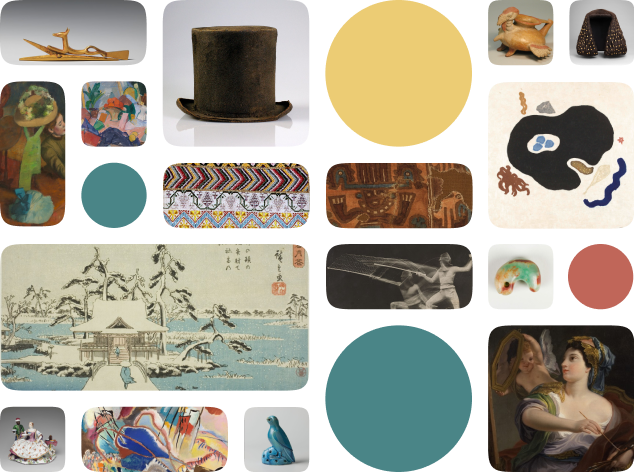Mask
Creator Name
Cultural Context
Date
Source
About the Work
Scholars think the bulbous, lively eyes starting out from this skull mask represent the cyclical relationship between death and life in Mesoamerican cosmovision. Life is born from death; death follows life.
Mask-wearing was central to Mexica religious life and thus the ritual life of the Aztec Empire. Aztec gods, represented in artifacts and codices, typically wear masks or headdresses. Some scholars have argued that masks are a central metaphor for Mesoamerican cosmovision, which views the life of this world as material matter adorning an ever-becoming life force.
While wearing masks, the human celebrant ceased to be human and instead embodied the god or principle represented by the mask. Someone likely wore this mask during rituals, perhaps as part of a more elaborate ritual outfit.
Mask-wearing was central to Mexica religious life and thus the ritual life of the Aztec Empire. Aztec gods, represented in artifacts and codices, typically wear masks or headdresses. Some scholars have argued that masks are a central metaphor for Mesoamerican cosmovision, which views the life of this world as material matter adorning an ever-becoming life force.
While wearing masks, the human celebrant ceased to be human and instead embodied the god or principle represented by the mask. Someone likely wore this mask during rituals, perhaps as part of a more elaborate ritual outfit.
Walters Art Museum Object Description
Throughout Mesoamerica, the wearing of masks was central to the performance of religious rituals and reenactments of myths and history. The face is the center of identity, and by changing one's face, a person can transcend the bounds of self, social expectations, and even earthly limitations. In this transformed state, the human becomes the god, supernatural being or mythic hero portrayed. Masks of skeletal heads, whether human or animal, are relatively common, for death played a central role in Mexica religion. Death was one of the twenty daysigns of the Mexican calendar, indicating its essential place in the natural cycle of the cosmos. Death also was directly connected to the concept of regeneration and resurrection, which was a basic principle ...
Work details
"--" = no data available
Title
Creator
Worktype
Cultural Context
Material
Dimensions
Technique
--
Language
--
Date
Provenance
Style Period
--
Rights
Inscription
--
Location
Source
Subjects
Topic
--
Curationist Contributors
Related Content
All Works in Curationist’s archives can be reproduced and used freely. How to attribute this Work:
Unknown, Mask, Aztec (Mexica), Late Postclassic. Walters Art Museum. An earthenware Mexica mask in the shape of a skull. CC0.
Help us improve this content!
Let our archivists know if you have something to add.
Save this work.
Start an account to add this work to your personal curated collection.
